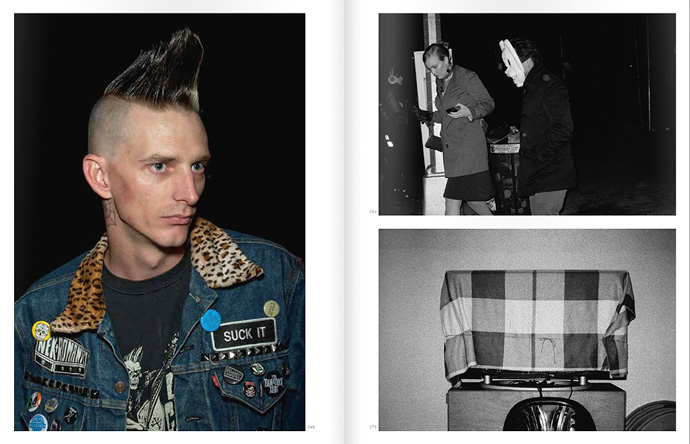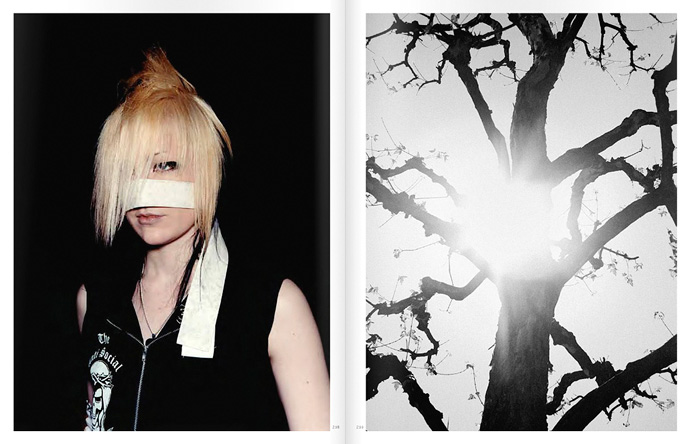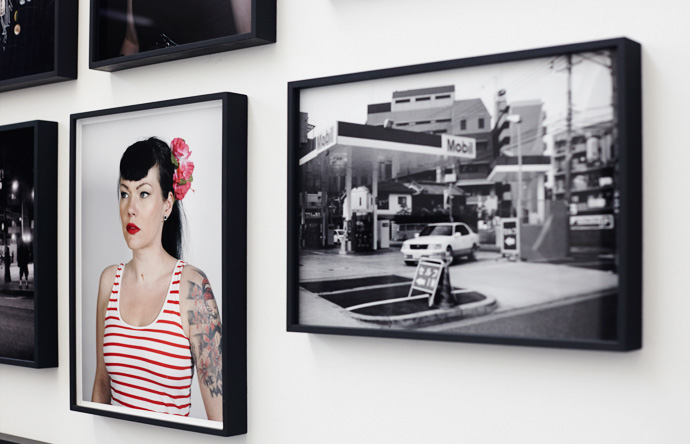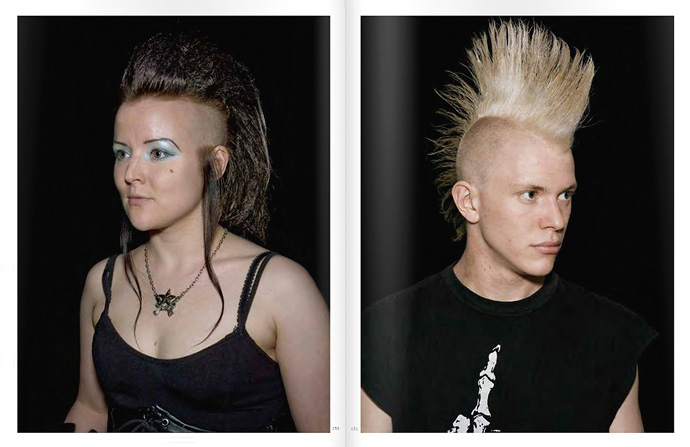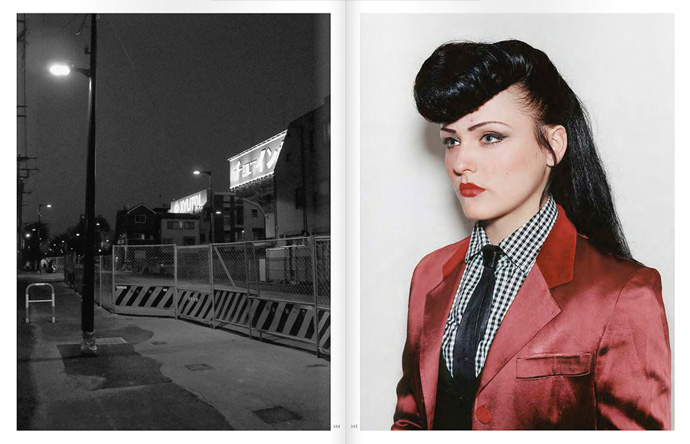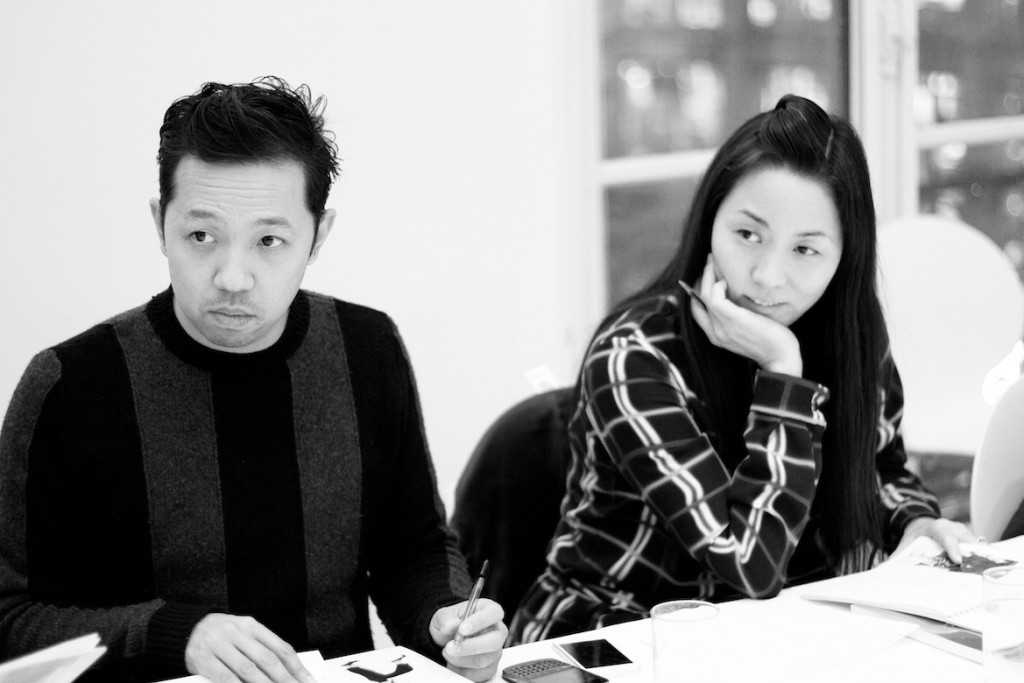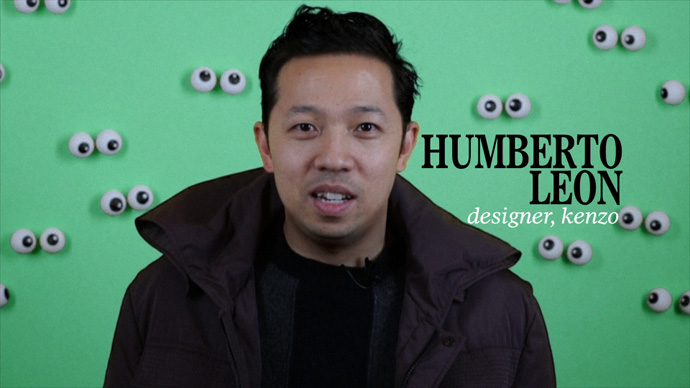-

OLIVER SIEBER – “THE NEW FUCK YOU”
-America, Asia, Europe… each continent spawns its own counter-cultures, centered for the most around music scenes. From these subcultures, Oliver Sieber creates an “Imaginary Club” composed of goths, punks, skins and rockabillies – irrespective of their cultural demarcations.
About 100 photos define the perimeters of Oliver Sieber’s “Imaginary Club, portraits taken in a makeshift studio of concerts, festivals and in clubs, and juxtaposed with black and white shots of deserted rehearsal spaces, street shots and club entrances.
Oliver Sieber’s “Imaginary Club” is exhibited at the Villa Noailles in Hyères as part of the 29th International Fashion & Photography Festival, a variation on his most recent book of same title. While setting up this exhibition, Oliver and his collaborator Katja Stuke spoke to The Stimuleye about the need of upheaval, total erosion of style and dress codes in youth culture and the need to find new forms of expressing positions of identity.
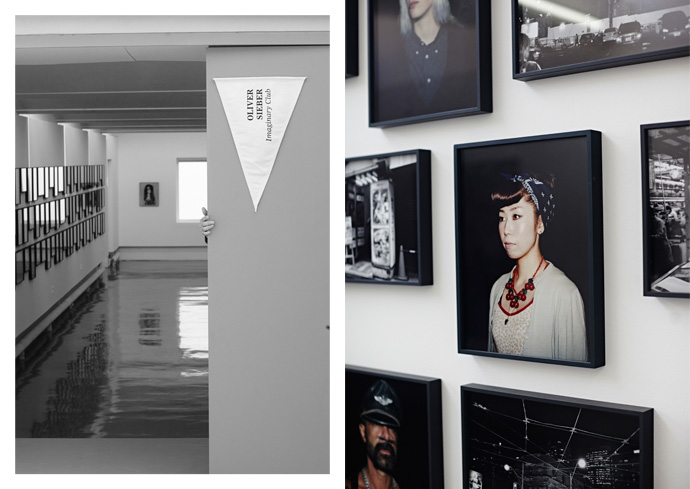
Oliver Sieber, "Imaginary Club": Exhibition at Villa Noailles, Hyeres
THE IMAGINARY CLUB
The Stimuleye: Who are these people in your “Imaginary Club”?
Oliver: What really interests me is reaction and forms of counter culture.
After WWII, the teenagers in America and England started to discover new forms of music and fashion, new forms of liberation. Many people I met are still in this sort of idea. Punk is a very good example, because it did have real societal meaning.That is what is important to teenager culture: upheaval, the struggle to identification, to root themselves. To not only take position against the elder generation, but in general. And that has often to do with music. I am interested in music, and communication of style codes.
The people in my “Imaginary Club” are not always part of a subculture in the classic sense. I have also portrayed artist friends, that, similar to teenagers, are forced to redefine themselves again and again. Here for example is a photo of Rebecca. From a wealthy family, she received always best grades, suddenly something switched in her head. Rebelling against her intellectual parents, she was climbing down the eaves gutters and was not to tame anymore.
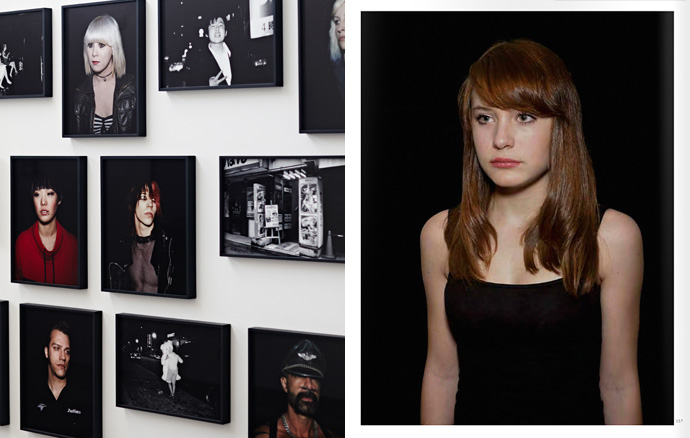
Oliver Sieber, "Imaginary Club": Exhibition at Villa Noailles, Hyeres. Right Side: Rebecca
When I look at my work, I understand it as an entry for the viewer, or a window upon which I reflect myself. Often it is not really about what is on the wall or who is depicted, but about the dialogue between the image and the onlooker. That changes from person to person.
The Stimuleye: Looking at the Portraits there are many Punks, Skinheads, Rockabillies.- is there also something a bit like nostalgia?
Oliver: We have a very globalized music culture today. Subcultures developing real novelties is something rather sparse and rare. Are there really subcultures that result from youth movements? I think it is not like that anymore. It’s more that youngsters try to identify with their role models of choice.
A good example is David Bowie that in the 70’s offered an image of “multi sexual liberation” for many people, also in combination with music and the song texts that bore a poetry and language that people picked up on. Just because we have 2014 now, his music did not disappear. You can still buy the records and the language still speaks to people who want to identify with it. And as fans do, they associate themselves with this. I think people living this don’t reflect on what they do, as we look at it. They just do it.
Katja:
There are always new aspects adding up and things get mixed up. So you have a development that can’t be called the “nostalgic”. It may be rooted in a source, and like in this case ideally there is a progression where new aspects ad up.Oliver Sieber, excepts from the book "Imaginary Club"
FASHION CODES AND THE INTERNET : THE NEW “FUCK YOU”
Katja:
Today you often cannot rely on the looks giving an indication on who people are: In Germany you find nazis that look like left anarchist “Antifa” fighters.
That possibly has to do with the internet, where you can communicate your stance or orientation in different ways then through fashion and dress codes.
You also have to react on other people adapting what you personally take serious as a subculture, how they mix your codes, abuse or pervert them.This makes it sometimes also difficult to determine whom are you following in a protest, where codes are so mixed up, that no one is able to keep up track.
For example in Ukraine its absolutely ambiguous who is protesting with whom recently. Unlike in the past, today it’s hard to determine who is on which side, from demonstrator to counter protester. Now you have young Nazi Hipsters in all black with tight jeans shouldering a jute bag, which really requires more than a second look to recognize what is going on.In this position you’re forced to find other forms to show your conviction that are different and function without the need of fashion as we had it in the past.
I am sure there are subcultures, but they function really differently, without the involvement of fashion, as the channels are much more multi layered. It’s not about provoking through your look anymore, because nowadays people are not easy to shock. So you have to find other ways and places to put your orientation forwards.Oliver Sieber, excepts from the book "Imaginary Club"
Oliver: In Japan a lot of messages get transported through flyers and stickers. This was similar in Los Angeles up until recently, but it changed and is now functioning mainly through hotmail panels. Everyone has a smartphone, no matter to which group you belong. The Cosplay culture for example functions only through the forums in the web. That’s all chat, appointments for conventions and Skype.
Katja:
But the internet is not at all as public as you may expect.
Often it’s very difficult to access a certain online group or forums. There are strict admins that want to know who you are and what you do, and remind you that with access you commit to a regular contribution etc- so you can’t just get in and check out. It’s much easier to go into a bar or a club, even if you have to pass and convince the bouncer.Oliver:
For example I photographed a young punk who realized how his style had been adapted and declared a trend. He totally changed his appearance to not be associated with this widely publicized new trend. That doesn’t mean though that his anti-ascist conviction or adoration for punk changed at all.As label and the designers pick up on elements of subculture their message is watered down extremely fast, so you have to have to change your codes again. As Jason (Evans) recently said at the Tate: “The new normal is the new ‘Fuck You,'”, because you can’t be categorized like this anymore.
Oliver Sieber, "Imaginary Club": Exhibition at Villa Noailles, Hyeres
PROTEST
Oliver:
That there is a new protest culture again is really great. These positions are getting from the internet to the street again, where you suddenly have to make an effort, as the codes we’re used to don’t work anymore when you can’t diversify between “good” and “evil”, nor recognize “your” or “my” people.Katja:
At the same time there is also these movements of parallel culture to create an existence and surrounding of some sorts of withdraw, even resigning.
This may be an approach resulting from being overwhelmed by societal developments. Specially in Japan we’ve met people that engage in small initiatives, artistic ones or others that take care of the homeless. There is this movement of “do it yourself” culture where people search for new forms of living for themselves apart from mainstream, norms and social graces, which are less visible.Oliver:
When visiting Osaka soon for another exhibit, we plan to investigate deeper into this, meet with these “alternative” people that found a totally different life and structure within of Japanese society.
What I found puzzling was that we met many homeless who spoke great English or Spanish, and had lived and worked abroad, but this had lead that they were not fully integrable any more into society, because the’ve been abroad too long and back in Japan landed on the street.Katja:
I think that also has to do that people with knowledge of languages have access to much more information over the internet for example, and thus are more open to ideas to try a different draft for their life than their parents, because that didn’t work that well either.
Specially as you can’t rely on social securities anymore- it’s not like our parent generation that studied, took a job and continued with a great retirement plan.Oliver Sieber, excepts from the book "Imaginary Club"
The Stimuleye: How do you work together?
Katja:
There are varying methods, but at times there are actual connections or a common greater theme and possibilities to juxtapose our work in an exhibition or we publish a book together for example at BöhmKobayashi.The City of Duesseldorf has provided us with a space we curated for three years where we developed “ANT!FOTO” which was to show exhibitions on positions of photography we feel were missing. As a result we also started a publication the “ANT!FOTO Manifest” which was a common project of us.
Oliver:
The “ANT!FOTO Manifest” was a project where we asked 70 photographer and curators to word their statement after a 10 point thesis we created. Initially this was planned only as a magazine, but finally will be shown in the Museum Folkwang as well as going to the
Fotomuseum Winterthur .The Stimuleye: What is the last thing that stimulated you?
Oliver:
After we talked so much on imagery, I would like to mention something that stimulated me:
when we talked to Frenkie (Bosnian Rapper) while visiting him in Tuzla, i asked him what is “heimat” (homeland) to him.
He said after being a refugee returning from Nuernberg to Tuzla, he realized what he missed: it was the scent of the firing wood that you can smell everywhere in the city. For my senses, apart from sound or music, the smell is very important.Oliver Sieber, excepts from the book "Imaginary Club"
Imaginary Club 2005-2012 432 pages, Offset-Print, a BöhmKobayashi/GwinZegal Joint
Imaginary Club is running at the Villa Noailles in Hyeres until may 25, 2014 and after that at the Galerie Stieglitz 19 in Antwerpen. Opening May 25, 2014, further dates are at PhotoBookMuseum from August 19, 2014 and after that the Exhibition will be travelling
10 -

#wrap-up #awards #alleyesonhyeres #2014
-#alleyesonhyeres indeed.
For its 29th edition, the fashion and photography festival reached new heights. More sunshine, more stars, more exhibitions, more public, more.
Here’s a wrap up of everything The Stimuleye covered in Hyères for those who missed it.
PHOTOGRAPHY
LORENZO VITTURI, GRAND JURY PRIZE
Italian photographer living in London Lorenzo Vitturi is the first to win 15 000 euros donated by Chanel, for his series “Dalston Anatomy.”
ORIANNE LOPES, SCHOOL OF VISUAL ARTS FUND
Orianne wins a scholarship to attend the School of Visual Arts’ “Photo Global” program in NYC.
VIRGINIE REBETEZ, SPECIAL MENTION OF THE JURY
Virginie wins a Leica S2 camera.
MARIE RIME, CITY OF HYERES AWARD
Awarded by the votes of the public of Hyères.
All the photographers in competition:
FASHION
CORALIE MARABELLE, CITY OF HYERES AWARD
Awarded by the votes of the public of Hyères.YULIA YEFIMTCHUK, SPECIAL MENTION OF THE JURY
Yulia’s collection will be carried by Opening Ceremony for the next 2 seasons.
CHLOE PRIZES
This year 2 Chloe prizes were awarded, each with a 15 000 euros fund:
ROSHI PORKAR
LISALORE FROWIJN
KENTA MATSHUSHIGE, GRAND PRIX DU JURY PREMIERE VISION
Kenta, who is from Japan but living and working in Paris, wins 15 000 euros given by Première Vision,
as well as a collaboration with Chanel Metiers d’Arts worth up to 15 000 euros, and a collaboration with Petit Bateau.ALL DESIGNERS IN COMPETITION + BONUS
THE FASHION SHOW
EXHIBITIONS – UNTIL MAY 25th
More info:
Villa Noailles, HyèresBONUS
The film directed by Antoine Asseraf & Julien Pujol about 2013 winner Satu Maaranen’s collaboration with Petit Bateau.
-

#AllEyesOnHyeres: Humberto Leon and Carol Lim of KENZO, presidents of the fashion jury
-American designers Humberto Leon and Carol Lim surged into the global spotlight in 2002, as the co-founders of New York City’s preeminent boutique, Opening Ceremony. With its keenly curated selection of luxury brands, the shop quickly attracted the attention of the fashion world at large, and in July 2011, Leon and Lim were appointed as the creative directors of Parisian label KENZO.
Humberto Leon and Carol Lim, by Filep Motwary.
The strong friendship shared by this creative duo dates back to their years at UC Berkeley in California, where they met as students in early 2000. After a decade of successful project launches and hotly anticipated collaborations with other labels and designers, they continue to challenge fashion habits and to conceive new methods of design.
Today, both are enthralled by the KENZO spirit, which they perceive as a lifestyle all its own, and the label is shaped by the singular creativity born of their partnership. The originality and diversity of patterns and prints, the bright colours, music and rhythms of disparate cultures from around the world are all inspirations behind KENZO’s revival: under the guidance of Leon and Lim, it strives to achieve a universality which will seduce men and women of all ages.
Fashion has been a catalyst and playground for socio-cultural movements. Today’s trends are tracked from street to runway and back again at such speed that subcultures can barely exist beyond the brands. In what way do you feel today’s fashion is relevant?
Fashion has and always will be one of the easiest ways people can express themselves. We love drawing inspiration from everything around us: culture, art, music, food, travel, and from seeing what people are wearing on the streets. Today’s fashion, the product of a more connected world, is extremely relevant for what KENZO stands for today. That connectivity is what brings people together: streetwear melding with tailoring, night and day, comfort and style. All of these elements and more make fashion right now an extremely exciting place to be.
Do you think that something originally pegged as a luxury fashion brand could evolve into something that ends up being a mainstream feature? Is it a good thing being mainstream or not?
What some people seem to forget is that KENZO as a brand was never intended to be “luxury.” Kenzo Takada, when he founded the brand, dreamt of creating collections accessible to the street. We feel that mainstream isn’t a negative word and that mainstream fashion can still be heavily design oriented. KENZO has always been democratic, and since joining the company in 2011, we wanted people to remember this. Mainstream usually means something collectively appreciated and that is something we like to celebrate. We would love for KENZO to be a household name around the world.
Carol Lim, by The Stimuleye.
Do you think it’s always advisable for designers to be very visible, seemingly available to and engaged with their audience? Should relatability, especially in this age of social media and hyper connectivity, always be a goal? How should a designer understand himself or herself in relation to the consumer?
It really depends on the brand. For us at KENZO we love engaging with the customer because that is where you see if your collections are something people will want to buy and wear. We want people to understand who we are as a company, and in order to do that, we have to understand who they are as clients. Social media gives us a direct link to our customers and we love being able to have a dialogue with them. They can ask questions, discover more about our world and become a part of the KENZO community.
Humberto Leon, by The Stimuleye.
You’re surrounded by collaborators coming from very different directions. For KENZO, how important is the idea of “family,” and the creative exchange with its members?
It’s super important for us. Both at KENZO and Opening Ceremony we work with our friends. It creates an open dialogue and brings out the best ideas. Working with collaborators such as Spike Jonze or Chloe Sevigny, people we have known for such a long time, is a joy. It’s important to love what you do, and what could be better than brainstorming or working on projects with people you admire and respect on both a personal and professional level?
Talent is an obvious thing to look for in a contestant, but what other qualities do you think will be important to look for in a designer, right now, in 2014?
We will look for a strong point of view as well as for someone who understands the importance of the whole process of design. It is important to be able to understand the business aspects as well as all the creative ones. Also, we will look for someone who has both drive and a sense of humility.
What is the last thing you saw, read, heard or felt that stimulated you?
Carol: Nausicaa and the Valley of the Wind, an animated film by Miyazaki.
Humberto: Seeing The XX perform an 40 person intimate show in New York.
NOTE: Interview questions were put together by this year’s Hyères Festival Blog Partners:
Malibongwe Tyilo, Filep Motwary, Branko Popovic, The Stimuleye, Sean Santiago, The Kinsky.

